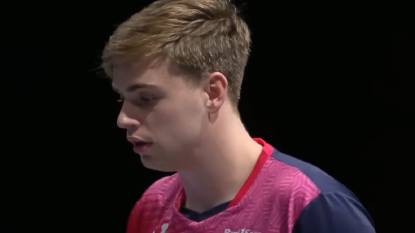Truls Möregårdh: Sweden's Artistic Technician Leading Europe's Resurgence
By: Mark
June 3, 2025 | Updated: October 22, 2025
Credit: ©ETTU Official
Truls Möregårdh has cemented his position among the world elite at #7, demonstrating remarkable technical artistry and tactical intelligence that have yielded impressive results including Olympic silver and consistent deep runs at major championships. The 23-year-old Swedish star represents Europe’s strongest challenge to Asian dominance, combining classical European fundamentals with modern power and speed. Despite a recent quarterfinal exit at the 2025 World Championships, his silver medal triumph at the Paris 2024 Olympics and subsequent tournament successes demonstrate his capacity to perform at the highest level. As Sweden’s highest-ranked player, Möregårdh carries the legacy of his country’s storied table tennis tradition while forging his own distinctive path as one of the sport’s most technically complete and aesthetically pleasing performers.
Truls rapid ascent on the international stage has drawn inevitable comparisons to Swedish legends of the sport, most notably Jan-Ove Waldner, whose legacy still casts a long shadow over the game. While Möregårdh brings a modern flair and youthful intensity, echoes of Waldner’s strategic genius and graceful shot-making can be seen in his approach—suggesting that Sweden may once again be on the cusp of table tennis greatness.
Personal Background
Truls Carl Eric Möregårdh was born on February 16, 2002, in Eslöv, a small city in southern Sweden with a rich table tennis tradition. Raised in a country where table tennis enjoys significant cultural status, Möregårdh was introduced to the sport at age six through local community programs. Unlike many elite players who come from table tennis families, Möregårdh didn’t have familial connections to the sport, discovering his passion and talent through school and local club play.
His exceptional potential was identified early by coaches at Eslövs AI, one of Sweden’s premier table tennis clubs, where he began structured training around age eight. This local development environment proved crucial in his formative years, providing quality coaching while allowing him to maintain normal schooling and social development. By his early teens, Möregårdh’s talent had become evident enough to earn him invitation to national youth training camps, where he was exposed to Sweden’s systematic development approach.
What distinguishes Möregårdh’s background is the fusion of traditional Swedish table tennis methodology—emphasizing technical fundamentals and tactical understanding—with modern physical and psychological preparation. This balanced developmental approach allowed him to progress through Sweden’s youth system without the burnout that affects many young talents, maintaining his passion for the sport alongside his technical development.
Möregårdh’s path to elite status accelerated when he joined the Swedish national training center in Halmstad as a teenager, training under the guidance of national coaches including former world-class players. This environment connected him with Sweden’s rich table tennis heritage while incorporating contemporary training methodologies needed to compete with modern players, particularly from Asia.
Throughout his development, Möregårdh maintained connections to his hometown club in Eslöv, returning periodically to train with formative coaches who understood his technical foundation. This continuity provided stability during his rapid rise through international rankings, helping preserve the distinctive technical elements that would later define his playing identity on the world stage.
This grounded upbringing and methodical development path have contributed to Möregårdh’s composed demeanor and mature approach to competition—characteristics that proved valuable during his breakthrough performances, including his silver medal run at the Paris 2024 Olympics, where he became the first Swedish Olympic men’s singles medalist since Jan-Ove Waldner’s silver at Sydney 2000.
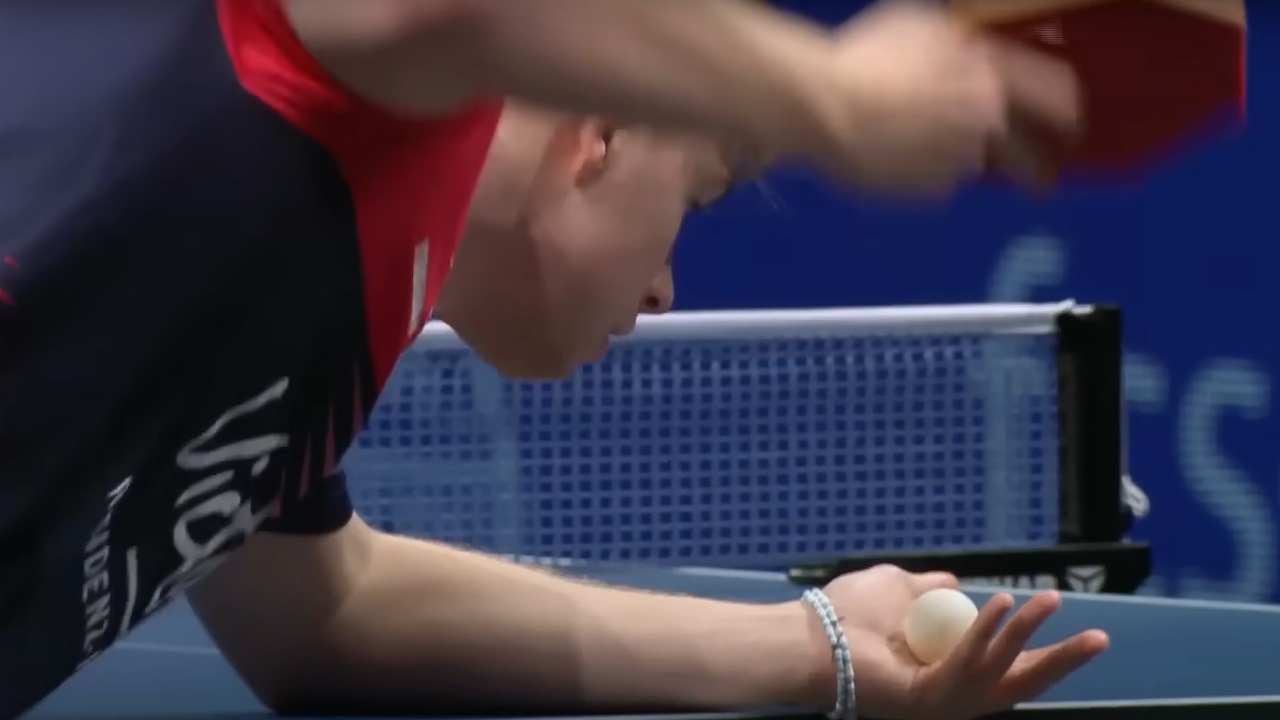
Physical Attributes & Playing Style
Truls Möregårdh stands approximately 6'0" (183cm) with an athletic build that combines power and agility—physical attributes that perfectly complement his distinctive playing style. His frame allows him to generate significant leverage on attacking shots while maintaining the mobility required for his dynamic movement patterns. With a wingspan slightly above average for his height, Möregårdh can cover the table effectively while maintaining proper positioning for both offensive and defensive sequences.
What immediately catches the eye about Möregårdh’s playing style is its aesthetic quality—a rare combination of technical precision and artistic flair reminiscent of Swedish legends like Waldner and Persson. He employs a classic European shakehand grip with a slightly more open racket angle than many contemporary players, creating exceptional versatility in stroke production. This technical foundation allows him to generate heavy spin while maintaining precise control, particularly evident in his topspin drives.
Möregårdh’s playing identity centers on controlled aggression from mid-distance, typically 1-2 meters from the table. From this position, he can execute his signature stroke—a devastatingly effective forehand loop with exceptional spin variation. Unlike many power players who rely on consistent maximum rotation, Möregårdh demonstrates remarkable capability to modulate spin and pace with subtle adjustments, creating challenges for opponents attempting to read his intentions.
His movement pattern features a distinctive rhythmic quality, with excellent footwork that allows rapid transitions between forehand and backhand positions. Möregårdh excels particularly at creating deceptive angles from seemingly neutral positions, redirecting pace with precision rather than simply countering with power. This spatial creativity represents a core element of his playing identity, allowing him to outmaneuver opponents through placement rather than overwhelming them with speed.
While his forehand remains his primary weapon, Möregårdh’s backhand has developed into a formidable complementary stroke. He utilizes a compact, modern backhand technique capable of generating substantial power without sacrificing control, particularly effective against incoming topspin. This balanced wing capability makes him difficult to target tactically, as he can attack effectively from either side of the table.
Möregårdh’s service game features exceptional variety, with a diverse repertoire of short placements and spin variations delivered from a consistent motion. Rather than relying on pure deception, his service strategy focuses on creating specific return patterns that he can exploit with prepared third-ball attacks—a tactical approach that demonstrates his sophisticated game intelligence.
Like many European players, Möregårdh’s style represents an evolutionary adaptation—maintaining continental technical traditions while incorporating elements necessary to compete with the modern Chinese system. The result is a playing identity that feels simultaneously classical and contemporary, combining aesthetic appeal with competitive effectiveness at the highest level.
Technical Analysis
Truls Möregårdh’s technical execution represents some of the finest stroke production in contemporary table tennis, combining classical European fundamentals with modern adaptations. His forehand technique features a slightly longer backswing than many current players, creating exceptional leverage and spin generation. The distinctive element is his wrist utilization—maintaining flexibility throughout the stroke while achieving precise control of contact angle and duration. This technical foundation enables his signature heavy topspin with placement accuracy that few players can match.
His forehand loop against backspin deserves particular technical analysis, as it represents perhaps the finest example of this stroke among current European players. Möregårdh achieves exceptional spin through perfect coordination of hip rotation, forward weight transfer, and wrist acceleration, with contact occurring slightly later than most players to maximize spin production. Against topspin, he employs a slightly modified technique with earlier contact and more horizontal brush, allowing him to redirect pace efficiently while maintaining spin continuity.
Möregårdh’s backhand has evolved significantly throughout his career development. Initially a control-oriented stroke, it has become increasingly offensive without sacrificing reliability. He employs a compact modern technique with minimal backswing, generating power through excellent core rotation and wrist flexibility rather than arm strength. This technical efficiency allows rapid transitions between defensive blocks and offensive counter-drives, particularly valuable in modern high-speed exchanges.
His service technique demonstrates sophisticated brush contact with excellent disguise of spin variations. Rather than extreme wrist contortions, Möregårdh achieves deception through consistent motion with subtle contact adjustments invisible to opponents. His backspin serves feature particularly fine contact quality, creating heavy reverse rotation with minimal visual cues for receivers to detect. Similarly, his sidespin variations maintain identical motion while producing dramatically different trajectories and bounce characteristics.
In receive situations, Möregårdh displays exceptional technical adaptability. Against short services, his touch is remarkably consistent, producing tight pushes that neutralize service advantages. His flick technique against half-long serves features perfect timing and balance, converting defensive positions into immediate initiative through aggressive but controlled attacks. Against long services, his early timing and compact loop technique allow him to neutralize even heavy spin while establishing offensive advantage.
His movement technique features excellent coordination between upper and lower body, with weight transfer that maximizes both power generation and recovery positioning. Möregårdh’s footwork is characterized by precise small steps rather than dramatic movements, maintaining balance throughout positional adjustments. This technical efficiency in movement contributes significantly to his consistency during extended rallies and pressure situations.
What truly distinguishes Möregårdh’s technical profile is the harmony between his various stroke elements—transitioning seamlessly between techniques without compromising body position or timing. This technical integration allows complex tactical implementations without mechanical breakdowns common in many talented but less technically complete players.
Tactical Approach
Truls Möregårdh’s tactical intelligence represents the perfect complement to his technical capabilities, demonstrating strategic sophistication that maximizes his physical and technical assets while mitigating potential vulnerabilities. His fundamental tactical approach centers on controlled initiative—seizing and maintaining attack priority through strategic ball placement rather than overwhelming power.
Against aggressive attackers, particularly from the Chinese national team, Möregårdh employs a distinctive tactical approach focused on disrupting rhythm and creating unfamiliar patterns. Rather than engaging in direct power exchanges where physical advantages might favor opponents, he systematically varies pace, spin, and placement to create hesitation and uncertainty. This disruptive strategy was evident in his Olympic semifinal victory over China’s Fan Zhendong en route to silver in Paris 2024, where tactical variation proved more effective than attempting to match the Chinese player’s pure power.
When facing defensive specialists, Möregårdh demonstrates exceptional patience combined with strategic acceleration at key moments. His tactical approach against choppers typically involves extended spin-building sequences, gradually increasing rotation and pace while maintaining precise placement to corners. This methodical pressure eventually creates openings for decisive attacks, rather than forcing premature winners that defensive specialists can exploit.
Möregårdh’s service tactics reflect similar strategic depth, with carefully designed patterns tailored to specific opponents. Against receivers who prefer immediate initiative, he employs short, heavy backspin services to constrain aggressive options, while against passive receivers, he more frequently utilizes half-long services with deceptive sidespin to create immediate attack opportunities on the third ball. This opponent-specific service strategy demonstrates his detailed preparation and tactical adaptability.
In longer formats like World Championship and Olympic matches, Möregårdh demonstrates sophisticated energy management and tactical evolution throughout matches. He frequently employs more conservative approaches in early games to observe opponent tendencies before implementing increasingly specific tactical plans as matches progress. This measured escalation was particularly evident during his Olympic campaign, where his tactical execution became progressively more precise in later rounds.
What separates Möregårdh’s tactical approach from many similarly skilled players is his exceptional situation recognition—identifying exactly when to increase risk or maintain consistency based on score, momentum, and opponent condition. This contextual decision-making allows him to maximize winning probabilities throughout matches rather than applying fixed tactical patterns regardless of circumstances.
His recent quarterfinal exit from the 2025 World Championships in Doha against China’s Wang Chuqin demonstrated both the effectiveness and limitations of his tactical approach. While Möregårdh’s variation-based strategy created significant challenges for his Chinese opponent, Wang’s exceptional adaptability ultimately prevailed in crucial moments. This outcome will likely inform tactical refinements as Möregårdh continues his development, potentially incorporating additional elements to counter the specific challenges posed by elite Chinese players.
Equipment Details
Truls Möregårdh has maintained a relatively consistent equipment setup throughout his senior career, reflecting his preference for familiarity and technical comfort over constant experimentation. Previously sponsored by Butterfly, Möregårdh utilized equipment from their professional range, carefully selected to complement his technical style and tactical approach. However, he has since transitioned to STIGA Sports, marking a significant shift in his equipment choices.
For his blade, Möregårdh now employs the STIGA Cybershape Carbon, a cutting-edge hexagonal blade that has gained attention for its optimized hitting surface and advanced carbon fiber construction. This choice aligns perfectly with his playing philosophy—providing sufficient speed for his aggressive topspins while maintaining the feeling and control necessary for his precise placement strategies. The Cybershape’s unique geometry enhances ball contact efficiency, supporting Möregårdh’s emphasis on spin variation and ball placement.
On his forehand, Möregårdh uses STIGA Mantra H, a high-performance rubber designed for powerful topspin strokes. This relatively firm, spring-sponged rubber provides the perfect platform for his heavy topspin game, offering excellent spin production while maintaining sufficient control for his placement-oriented style. The Mantra H’s characteristic sharp, dynamic performance complements his technical forehand approach, particularly in topspin exchanges where spin production is prioritized over raw speed.
His backhand side also features STIGA Mantra H, ensuring consistency across both wings while maintaining the grip necessary for aggressive counter-drives and flicks. This selective differentiation between forehand and backhand rubbers represents a sophisticated equipment approach, optimizing specific characteristics for each wing while maintaining overall setup cohesion. Möregårdh’s racket setup produces a distinctive sound during contact—a sharp, clean impact that reflects the quality of his stroke production and equipment integration. This acoustic signature has become associated with his playing style, immediately recognizable to fans and fellow players alike.
Unlike many players who frequently modify their equipment seeking marginal advantages, Möregårdh has maintained remarkable consistency in his setup, making only subtle adjustments as his technical execution has evolved. This stability reflects both confidence in his equipment choices and recognition that technical mastery rather than equipment variation underpins consistent performance at the elite level.
His equipment represents the modern European approach to table tennis technology—embracing advanced materials and construction while preserving the feeling and control characteristics essential to technically sophisticated play. This balance between traditional values and technological innovation mirrors Möregårdh’s playing identity, creating perfect synergy between player and equipment.
Career Achievements
Truls Möregårdh’s career has been defined by consistent progression punctuated by breakthrough performances at the highest levels of international competition. His crowning achievement came at the Paris 2024 Olympics, where he captured the silver medal in men’s singles, defeating world #1 Fan Zhendong in a stunning semifinal before falling to China’s Wang Chuqin in a closely contested final. This Olympic success represented both personal triumph and historical significance—making him the first Swedish Olympic men’s singles medalist since Jan-Ove Waldner’s silver at Sydney 2000.
Prior to his Olympic glory, Möregårdh announced his elite potential at the 2021 World Championships in Houston, where as a relatively unknown 19-year-old, he reached the final before losing to Fan Zhendong. This unexpected breakthrough established him among the world’s premier talents and signaled Europe’s renewed competitiveness at the highest levels.
On the WTT circuit, Möregårdh has collected impressive results, including two WTT Champions titles and multiple finals appearances at Contender and Star Contender events between 2022-2025. These consistent performances propelled his rise through world rankings, reaching #7 by June 2025—establishing him firmly among the global elite and as Europe’s top-ranked player.
At continental level, Möregårdh claimed the 2022 European Championships singles title in Munich, defeating Germany’s Dimitrij Ovtcharov in the final. This victory represented his assumption of European table tennis leadership from the previous generation, a position he has maintained through consistent results in subsequent continental competitions.
His most recent major championship performance came at the 2025 World Table Tennis Championships in Doha, where he reached the quarterfinals before falling to eventual champion Wang Chuqin in a hard-fought six-game match. Though falling short of his 2021 finals appearance, this result confirmed his continued presence among the world’s elite competitors.
In team competitions, Möregårdh has established himself as Sweden’s anchor in international events. At the 2024 World Team Championships, he led Sweden to a bronze medal, their first team medal since 2018, demonstrating his value beyond individual achievements. Similarly, at the 2023 European Team Championships, his undefeated performance guided Sweden to gold, reinforcing the nation’s traditional strength in team formats.
Möregårdh’s consistent presence in the later rounds of major championships represents remarkable achievement given the continued dominance of Chinese players at the highest levels. His capacity to challenge this hegemony, particularly through his Olympic victory over Fan Zhendong, has established him as one of the few non-Chinese players capable of competing for major titles in the current era.
Most recently, at the WTT Champions Macao in May 2025, Möregårdh reached the semifinals before narrowly losing to Japan’s Tomokazu Harimoto in seven games, demonstrating his continued competitiveness at elite WTT events. This performance helped solidify his #7 world ranking heading into the summer of 2025.
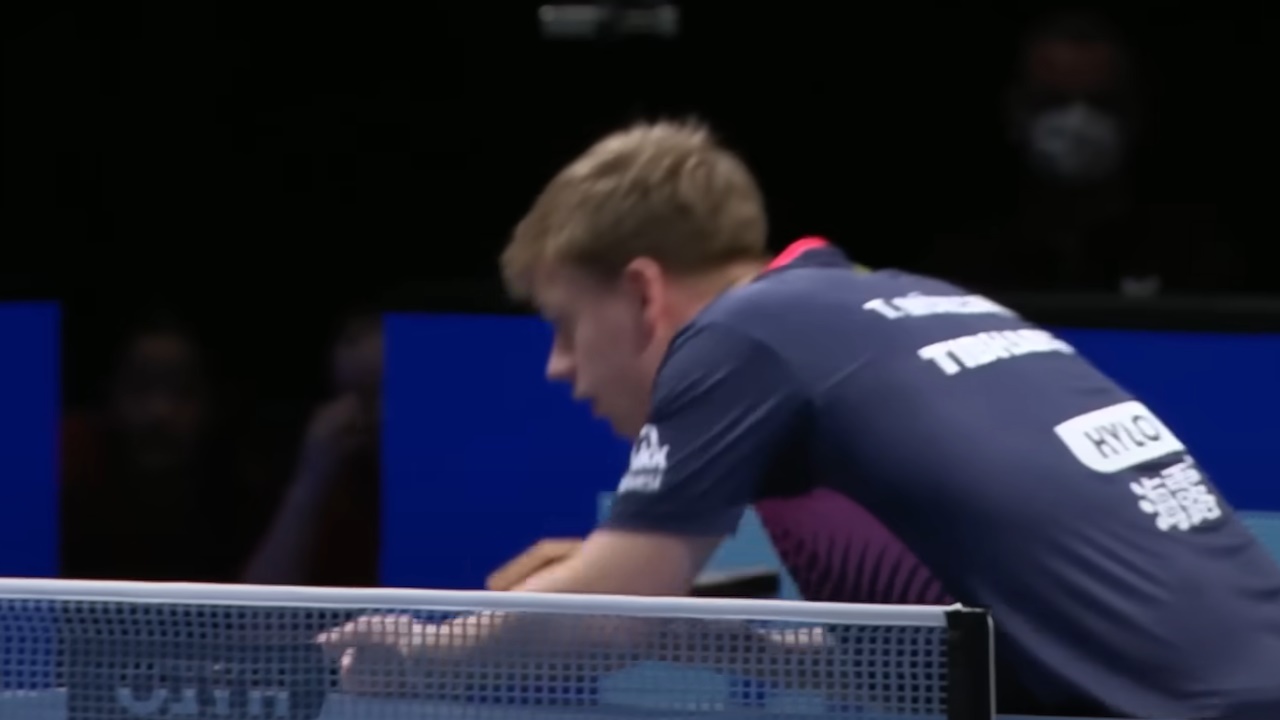
Training Methodology
Truls Möregårdh’s training methodology reflects the evolution of Swedish table tennis development while incorporating contemporary elements necessary for competing with Asian powerhouses. Based primarily at Sweden’s national training center in Halmstad, his regimen combines traditional European technical emphasis with modern physical and psychological preparation tailored specifically to his playing style and developmental needs.
His technical training maintains the Swedish tradition of quality over quantity, with focused sessions emphasizing perfect execution rather than maximum repetition. A typical daily schedule includes 4-5 hours of table practice divided into specialized segments—technical refinement, tactical implementation, and simulated match play. This structured approach reflects Sweden’s systematic development philosophy that produced legends like Waldner, Persson, and Appelgren in previous generations, now adapted for contemporary competitive demands.
Möregårdh’s practice partners typically include fellow Swedish national team members, supplemented by sparring players specifically selected to simulate upcoming opponents. Additionally, regular training exchanges with other European national teams, particularly Germany and France, provide exposure to diverse playing styles essential for maintaining tactical adaptability.
Physical conditioning forms a crucial component of his development program, with specialized work designed to support his playing style’s physical demands. Unlike previous generations of European players who treated physical training as separate from technical development, Möregårdh’s physical preparation is fully integrated with his technical work. His program emphasizes explosive movement, rotational core strength, and endurance capabilities necessary for maintaining technique during extended tournaments.
The psychological dimension of Möregårdh’s training has received increased emphasis following his breakthrough performances, particularly regarding pressure management in high-stakes situations. Working with sports psychologists, he has developed robust pre-match routines and in-match reset protocols that maintain focus during critical moments. This mental resilience proved particularly valuable during his Olympic campaign, where he demonstrated exceptional composure in pressure situations against higher-ranked opponents.
Video analysis features prominently in his preparation, with detailed study of both his performances and potential opponents. This analytical approach accelerates tactical development, allowing identification of patterns and tendencies that inform strategic planning. Following significant competitions like the recent 2025 World Championships, Möregårdh typically engages in comprehensive performance review, identifying specific areas for technical and tactical refinement.
What distinguishes Möregårdh’s training methodology is its balance between respecting Swedish table tennis traditions and embracing innovations necessary for contemporary success. Rather than abandoning European fundamentals to adopt Asian approaches wholesale, his development program selectively incorporates elements that complement his natural style and technical foundation. This measured evolution has produced a player who embodies Swedish table tennis virtues while possessing the physical and technical capabilities to challenge the dominant Chinese system.
Influence & Legacy
Despite being just 23 years old, Truls Möregårdh has already established a meaningful influence on Swedish and European table tennis that extends beyond his competitive achievements. His Olympic silver medal at Paris 2024 represented a pivotal moment for European table tennis, demonstrating that the continental style can still compete with Asian dominance when executed at its highest level. This success has reinvigorated interest in table tennis across Sweden, where participation had declined from the sport’s peak popularity during the Waldner era.
For younger Swedish players, Möregårdh provides an accessible contemporary model that bridges classical technique with modern requirements. His success validates European technical fundamentals while demonstrating necessary adaptations for current competition. This balanced approach has influenced coaching methodologies throughout Swedish development pipelines, encouraging preservation of traditional values while incorporating physical and tactical elements required for contemporary success.
Möregårdh’s playing style has particular significance for technical purists, demonstrating that aesthetically pleasing, spin-oriented play remains viable at elite levels despite trends toward increased power and speed. His success counters the narrative that European technical traditions have been rendered obsolete by modern developments, providing evidence that technical artistry can coexist with competitive effectiveness when properly executed.
Within professional circuits, Möregårdh has influenced tactical approaches through his success against Chinese opponents. His victory over Fan Zhendong at the Paris Olympics provided a tactical template that other European and Japanese players have studied and adapted, creating renewed strategic diversity in the men’s game. This contribution extends beyond his personal achievements, potentially reshaping competitive dynamics at the highest levels.
In Sweden specifically, Möregårdh’s success has reestablished the nation’s connection to its rich table tennis heritage. As the most successful Swedish player since the Waldner-Persson-Waldner generation, he represents both continuation of tradition and evolution toward future possibilities. The Swedish Table Tennis Association reported significant increases in youth participation following his Olympic medal, suggesting his influence extends to inspiring the next generation of players.
Beyond table tennis, Möregårdh has emerged as one of Sweden’s most recognized athletes, achieving popularity that transcends his sport. This mainstream recognition was confirmed when he was named the Swedish people’s choice athlete of the year in 2024, beating out established stars like pole vaulter Mondo Duplantis and swimmer Sarah Sjöström. This broader cultural impact enhances table tennis’s profile while creating commercial and media opportunities that benefit the sport’s development.
While his ultimate legacy remains to be determined as his career continues, Möregårdh has already established himself as a transformative figure bridging Swedish table tennis’s storied past with its future potential. His technical artistry, competitive achievements, and ambassadorial role combine to influence the sport across multiple dimensions, from grassroots participation to elite tactical approaches.
Current Standing & Context Among Peers
Truls Möregårdh’s current world ranking of #7 (as of June 3, 2025) places him firmly among the global elite and establishes him as Europe’s highest-ranked male player. This position reflects both his consistent performance over the past two seasons and his capacity to challenge for titles at the highest levels of international competition. Among his contemporaries, Möregårdh occupies a distinctive position as one of the few European players consistently capable of defeating Chinese opponents in major championships.
The competitive context surrounding Möregårdh features a diverse group of elite players with contrasting styles. The top rankings remain dominated by Chinese athletes, with Wang Chuqin (#1), Fan Zhendong (#2), and Ma Long (#4) representing the continued strength of the Chinese system. Japan’s Tomokazu Harimoto (#3) provides another Asian presence in the top ranks, while Brazil’s Hugo Calderano (#5) and the French brothers Felix Lebrun (#6) and Alexis Lebrun (#20) constitute the other non-Chinese players consistently challenging at the highest levels.
Möregårdh’s standing within this elite group is defined not merely by ranking but by the respect his technical quality commands from fellow professionals. His capacity to blend aesthetic beauty with competitive effectiveness makes him particularly valued by technical purists and fans appreciative of stylistic diversity in the modern game. This respect was evident in the extensive analysis Chinese coaches dedicated to his game prior to the 2025 World Championships, recognizing him as a legitimate threat to their players’ dominance.
His recent tournament performances provide context for his current standing. At the 2025 World Championships in Doha, Möregårdh reached the quarterfinals before falling to eventual champion Wang Chuqin in six games. While this result fell short of his 2021 finals appearance, it confirmed his continued presence among the world’s elite. Similarly, his semifinal finish at the WTT Champions Macao in May 2025 demonstrated his consistent competitiveness at the highest-level WTT events.
Within European table tennis, Möregårdh has assumed the mantle of continental leadership, succeeding veterans like Timo Boll and Dimitrij Ovtcharov who dominated European table tennis for nearly two decades. This transition represents generational change in European table tennis, with Möregårdh joining the Lebrun brothers as the vanguard of new European talent challenging Asian hegemony.
In historical context, Möregårdh represents the continuation of Sweden’s proud table tennis tradition adapted for contemporary competition. While comparisons to legends like Waldner inevitably arise, particularly after his Olympic silver matched Waldner’s Sydney 2000 achievement, Möregårdh has established his own distinctive identity rather than merely replicating past models. His success demonstrates that Swedish methodology remains viable when evolved to address modern competitive demands, providing both validation of tradition and blueprint for future development.
Like a perfectly executed topspin drive that combines aesthetic beauty with competitive effectiveness, Möregårdh’s career has balanced technical artistry with pragmatic results, earning both admiration for his style and respect for his achievements among the global table tennis community.
Follow Truls Möregårdh on Social Media
Truls Moregard vs Jang Woojin | Match Highlights | #ITTFWorlds2025 [Video]
Featured Articles
Dive into in-depth stories, exclusive interviews, and expert advice from the world of table tennis. Discover strategies, player spotlights, and behind-the-scenes insights.

Ping Pong Revolution: How Table Tennis Transforms Homes, Offices, and Communities
Table tennis is uniquely positioned as one of the most versatile recreational activities available today. This comprehensive article explores the transformative impact of ping pong across three …
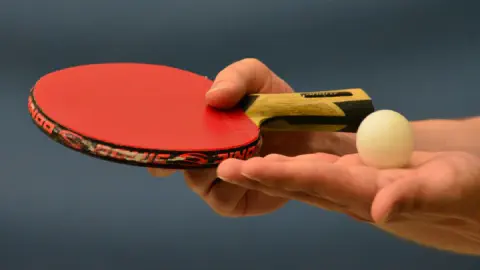
Basic Equipment Needed to Play Table Tennis
What is the basic equipment that you need to get started with playing ping pong? Our guide to the very basic table tennis equipment required to go ahead and start to play. A guide to the basics of …
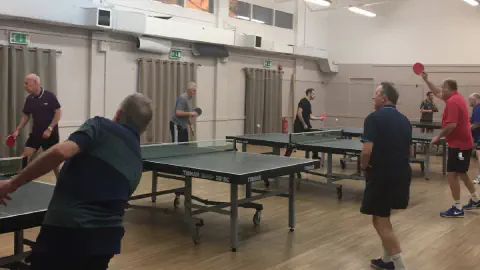
Is Ping Pong Good Exercise? The Top Health Benefits Explained
Table tennis is great exercise both for mind and body. You can use ping pong to keep fit alongside other exercise programs and raise your overall activity levels to lose weight and keep your mind …

Ping Pong Revolution: How Table Tennis Transforms Homes, Offices, and Communities
Table tennis is uniquely positioned as one of the most versatile recreational activities …

Basic Equipment Needed to Play Table Tennis
What is the basic equipment that you need to get started with playing ping pong? Our guide …

Is Ping Pong Good Exercise? The Top Health Benefits Explained
Table tennis is great exercise both for mind and body. You can use ping pong to keep fit …

